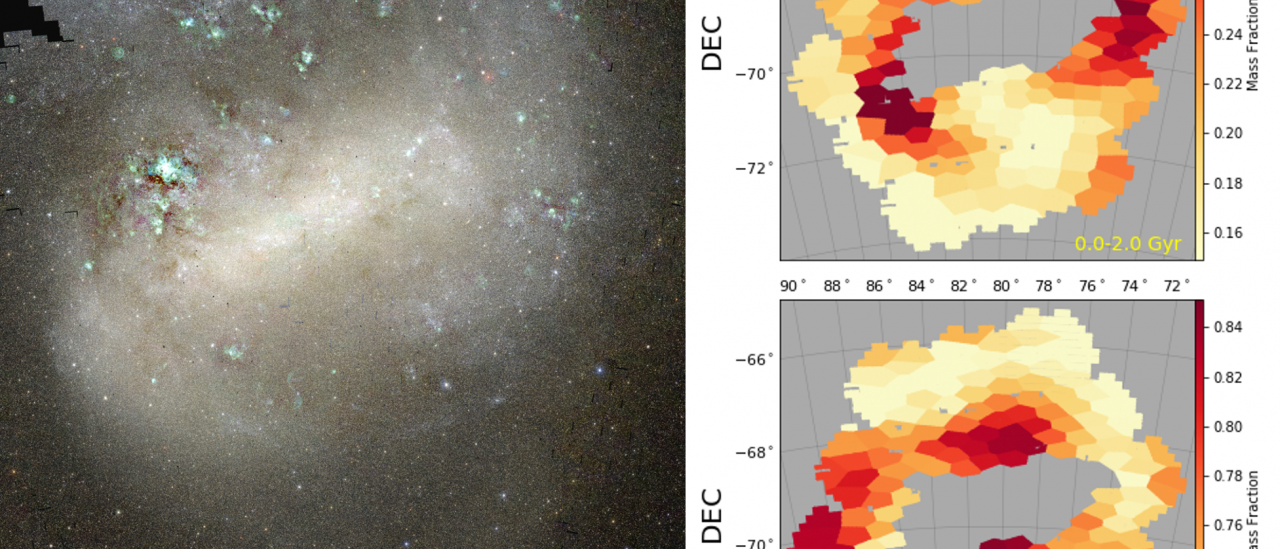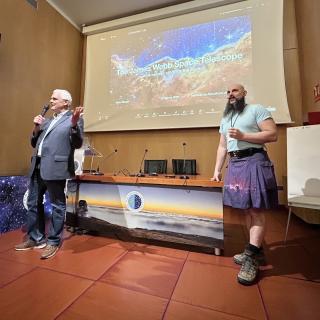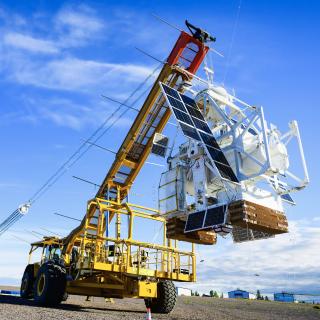Some galaxies in the Universe display beautiful and appealing features known as "spiral arms". However, not all galaxies show spiral arms in the same manner. Among the variety of cases the Large Magellanic Cloud (LMC), a dwarf galaxy infalling towards the Milky Way, stands out. The LMC is the prototype of an entire family of galaxies, the Magellanic Spirals that are characterised by the presence of a barred stellar structure near their centres and a single spiral arm. Spiral patterns can form after galactic collisions, with subsequent star formation piling up in these arms. Nevertheless, we are still far from knowing all about these peculiar structures. How are they ultimately formed? Are they long-lasting or destroyed and reformed periodically? The level of detail attainable in the LMC, the closest spiral system to Earth, can be exploit to answer these questions. Here, we have studied the star formation history of the whole LMC by comparing the observed Colour-Magnitude Diagrams from SMASH data with sophisticated stellar population models. As a result, we have mapped where stars of different ages are located within the LMC, finding that stars younger than 2 billion years accumulate in the northern part of the system, coinciding with the position of the spiral arm. Given that star formation tends to concentrate there, this might not be seem like a surprise. However, we have to take into account that the LMC is a dynamical system and its stars are in constant movement. Roughly speaking, it takes around 200 million years for a star to orbit around the centre of the LMC and in a couple of such orbits everything should be well mixed. However, the reported spatial coherence for stars younger than 2 billion years provides clear evidence that this structure has been in place for at least the last ~2 billion years. In other words, the LMC spiral arm is a stable, long-lived structure. What happened to the LMC around 2 billion years ago that triggered the formation of its spiral arm? Several works have invoked interactions between the LMC and its companion, the Small Magellanic Cloud (SMC), to explain large scale structures in the Magellanic system. In particular, recent numerical works claim that recurrent interactions between the Clouds started happening ~2.7 billion years ago. If we put all the pieces together a coherent scenario emerges. Around 2-3 billion years ago there was a close encounter between the LMC and the SMC that triggered the formation of a stable dynamical structure, the LMC spiral arm. This structure has survived and kept forming stars for the last couple of billion years.
Left: Colour image of the Large Magellanic Cloud, directly obtained from SMASH data. Right: Spatial distribution of the stellar mass fraction of stars younger (top) and older (bottom) than 2 billion years.
Advertised on
Authors
Tomas
Ruiz Lara
Carmen
Gallart Gallart
Matteo
Monelli
et al.
References




